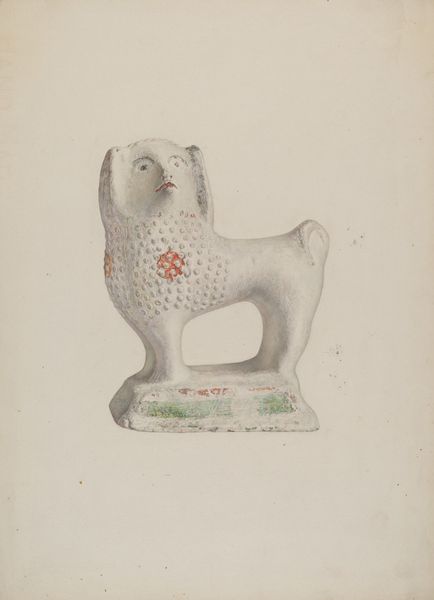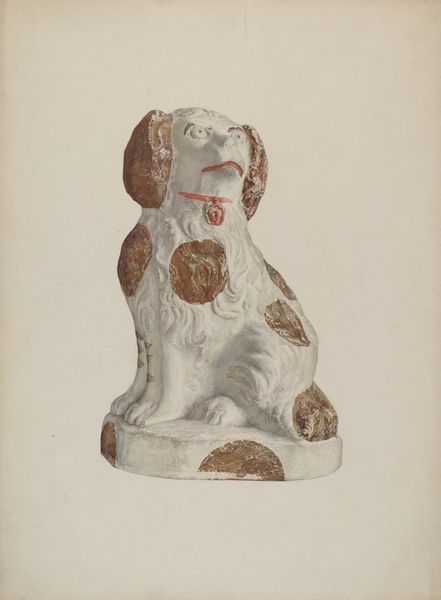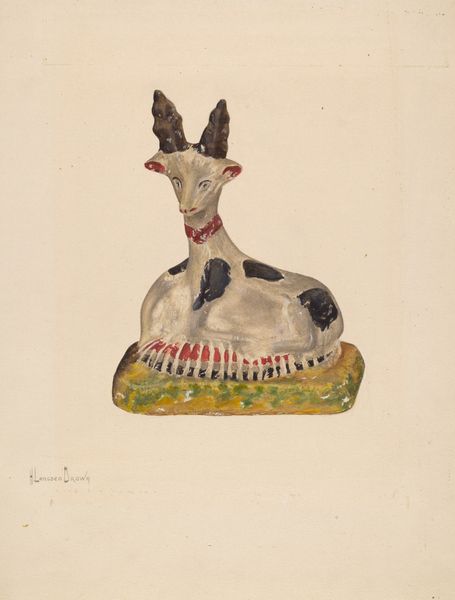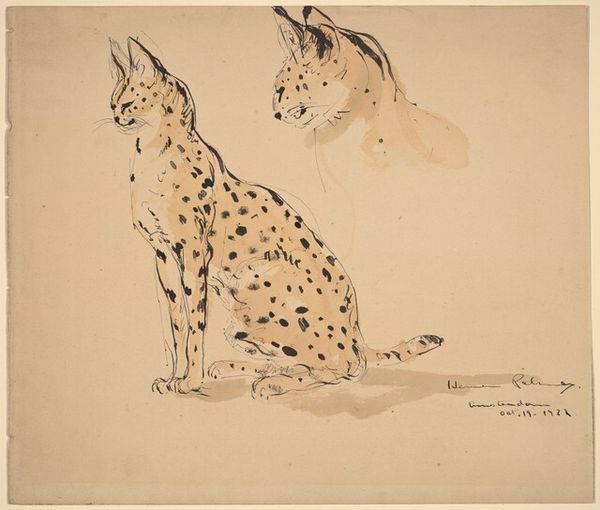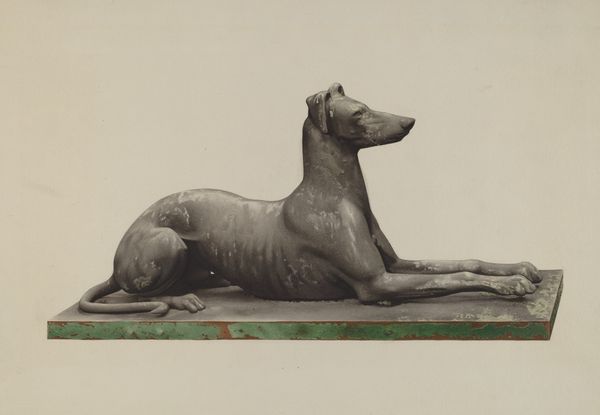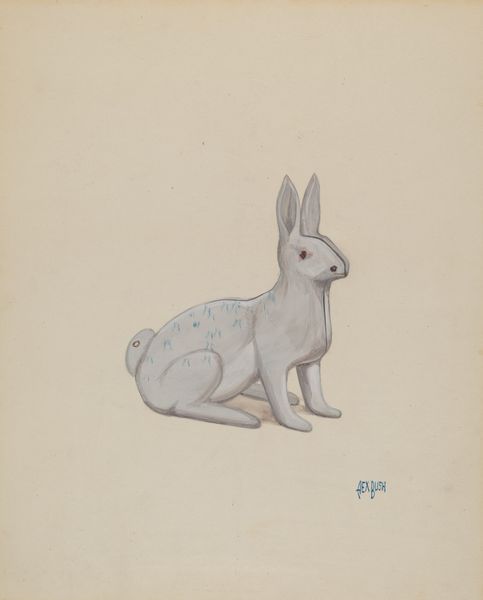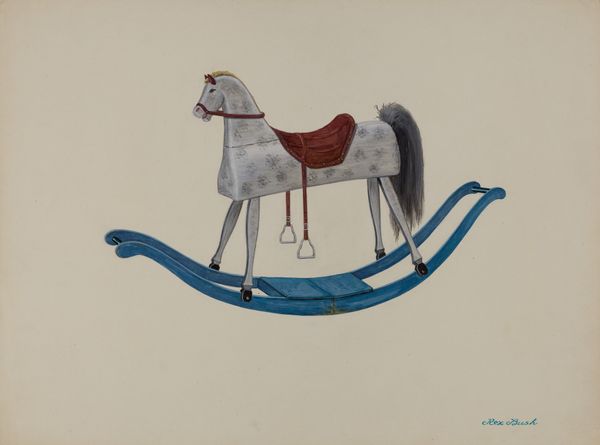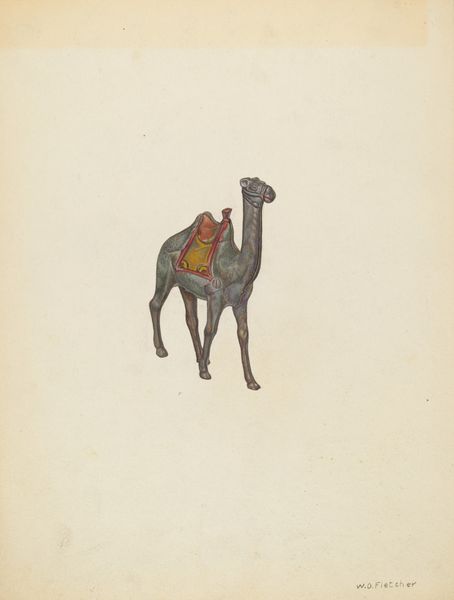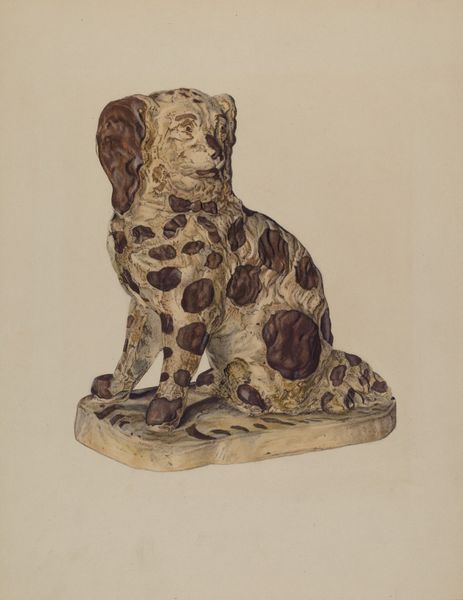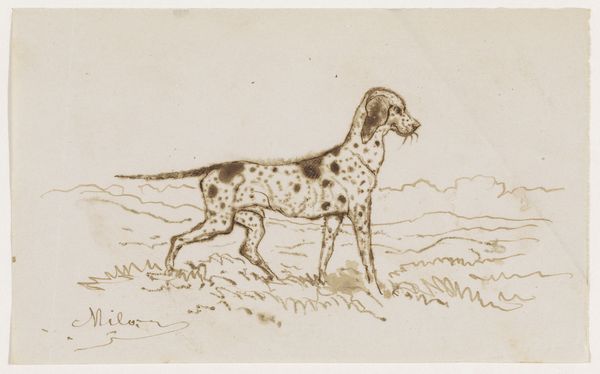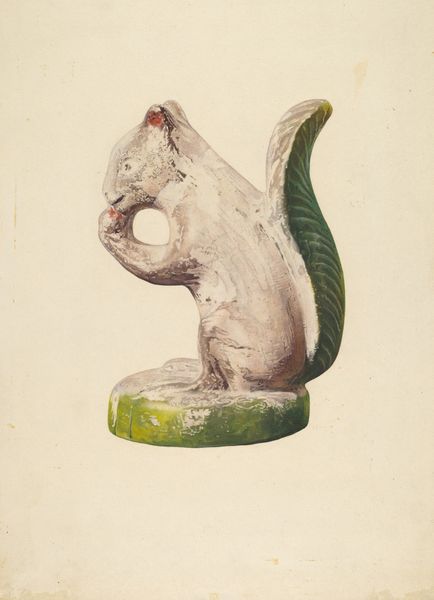
drawing, watercolor
#
portrait
#
drawing
#
figuration
#
watercolor
#
watercolour illustration
#
watercolor
Dimensions: overall: 28.5 x 21.6 cm (11 1/4 x 8 1/2 in.)
Copyright: National Gallery of Art: CC0 1.0
Curator: Okay, so before us we have “Dog (Mantel Ornament)” a watercolor created around 1938 by Z.S. Lupus. Editor: Well, hello there, posh pooch! He’s perched so primly. Immediately, I see kitsch—almost a proto-Jeff Koons vibe, though much more demure. It has the quality of mid-century commercial art… that period where we start blurring lines between craft and fine art in a big way, a blurring I appreciate. Curator: I agree. There's a subtle irony in elevating such an everyday object—a mantel ornament—to art through careful rendering. The Dalmatian spots are playfully imprecise, giving him real character. I imagine Lupus had one sitting right there in his studio... Or, who knows, maybe it’s a stand in? What stories does it tell about display, pride and domestic space? Editor: Or consider Lupus himself! What materials were available to him, the social climate influencing his aesthetic choices? Was he making a living solely off his art? Did commissions like these pay the bills? The little gold collar detail contrasts perfectly with the purple and gold base. Curator: Indeed! The ornament becomes less about the breed, the individual animal, and more a comment on artifice. That regal stance... yet slightly cross-eyed. It gives it an appealing, very human, vulnerability. It’s self-aware. I suspect this artist had a quiet, almost wicked sense of humor. Editor: Exactly! Lupus cleverly uses a popular breed that signifies affluence—Dalmatians always had this certain ‘Hollywood’ glamour—placing him not directly *in* a domestic space, but *on* it, and *as* commodity. The subtle imperfections hint at hand-production; a gentle nod away from mass manufacturing and disposability. Curator: That brings such a bittersweet element to what seems like a charming painting! I’ll never look at mantel ornaments the same way again. Editor: Me neither. This piece encourages you to appreciate the ordinary anew. It quietly interrogates how society chooses to value both labor and material.
Comments
No comments
Be the first to comment and join the conversation on the ultimate creative platform.
